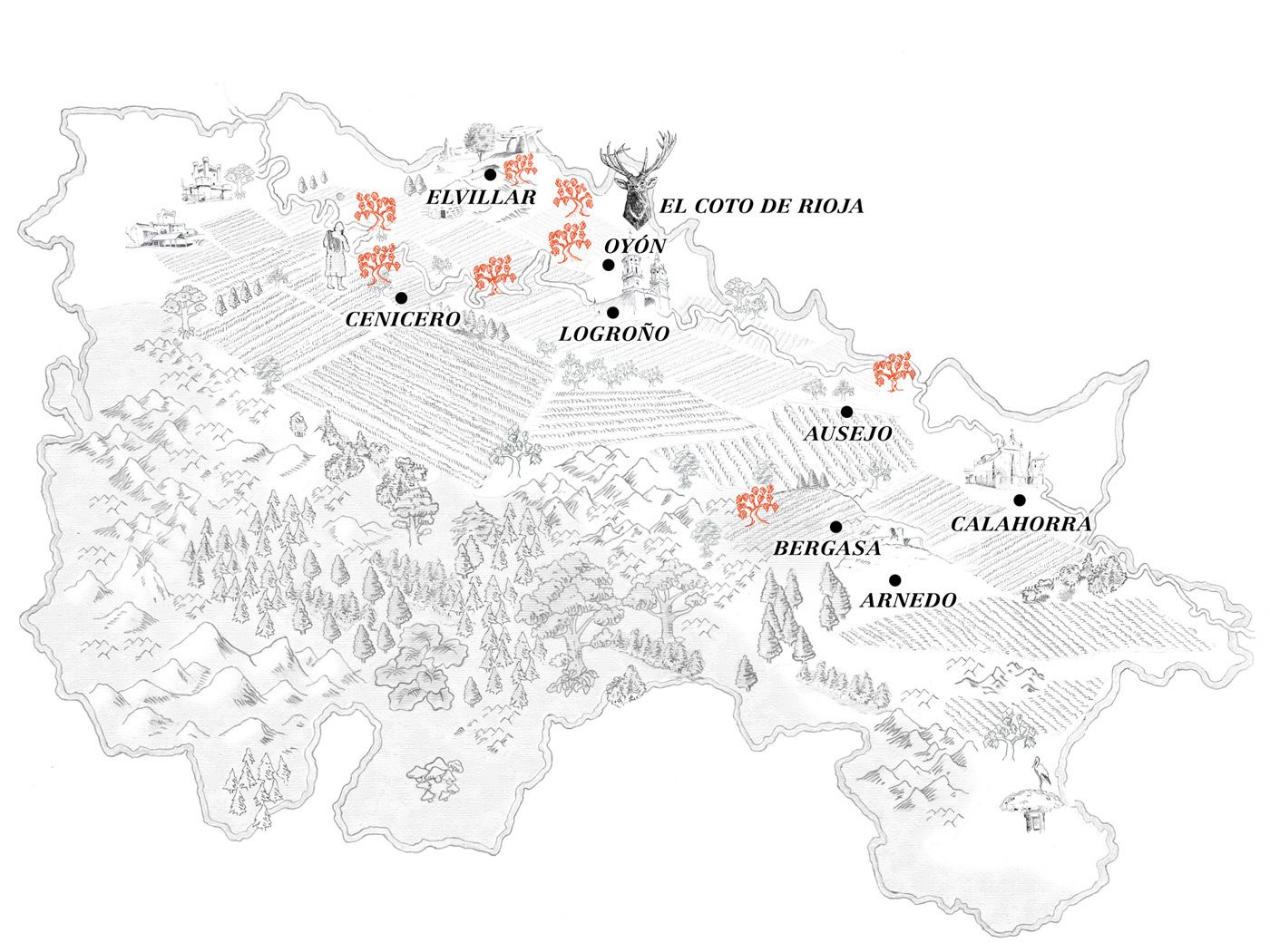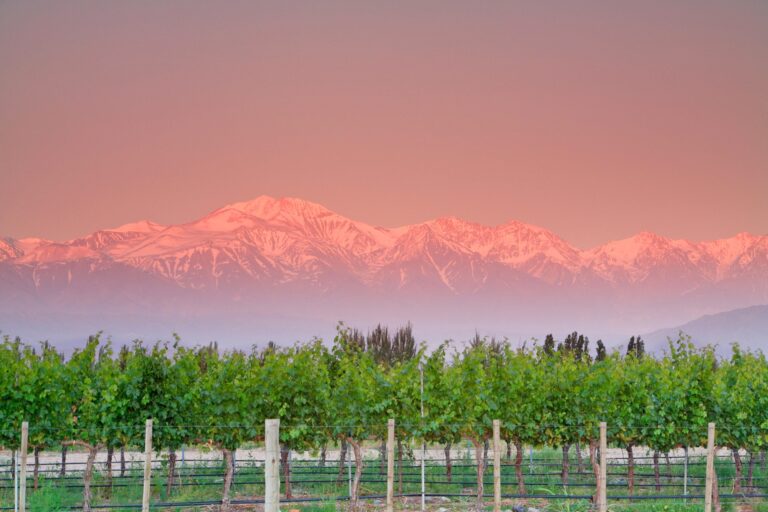Rioja is located in northern Spain and follows along the Ebro River for approximately 60 miles. To the north is Navarra and Pais Vasco, to the east you will find Aragon and to the south and west is Castilla y Leon. The autonomous region of La Rioja includes both La Rioja and DOCa Rioja.
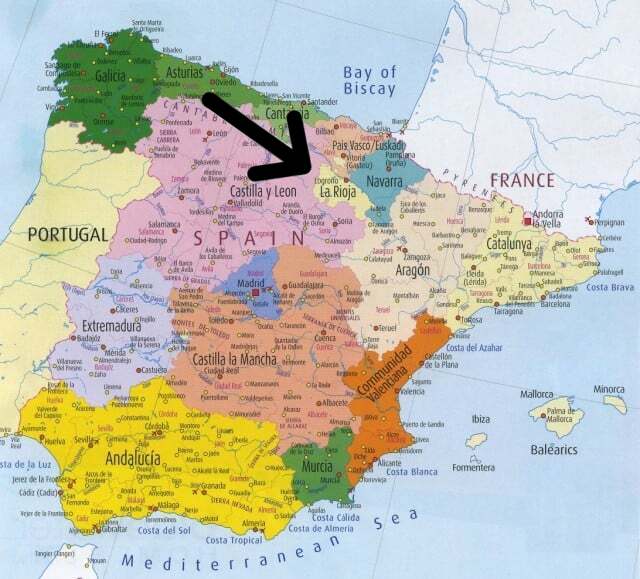
There has been a tradition of wine making in this region of Spain since the Phoenicians. In fact, the first written documentation of Spanish writings was in Rioja as well as the first wine regulatory board, which was formed in 1925. In 1928, the region created the seal as proof of quality. Rioja wine was so prized that the region began placing gold netting known as malla on the bottles towards the end of the 19th century to help deter counterfeiting.
The region is climactically protected by the Cantabrian Mountains to the north and west. These mountains allow for the warm and dry climate that is ideal for growing Garnacha and Tempranillo as well as Viura, also known as Macabeo. The soils within the autonomous La Rioja are made up of mostly limestone. Often referred to as the Zone of the Seven Valleys Rioja vineyards are found along the Ebro River tributaries. Another climactic factor is the intense wind known as Cierzo. This wind is an important factor in the quality of the wine as it cools down the temperature and drives away potentially harmful humidity. The wind is most active in the fall and winter and allows the grapes to remain on the vine longer and ripen fully.
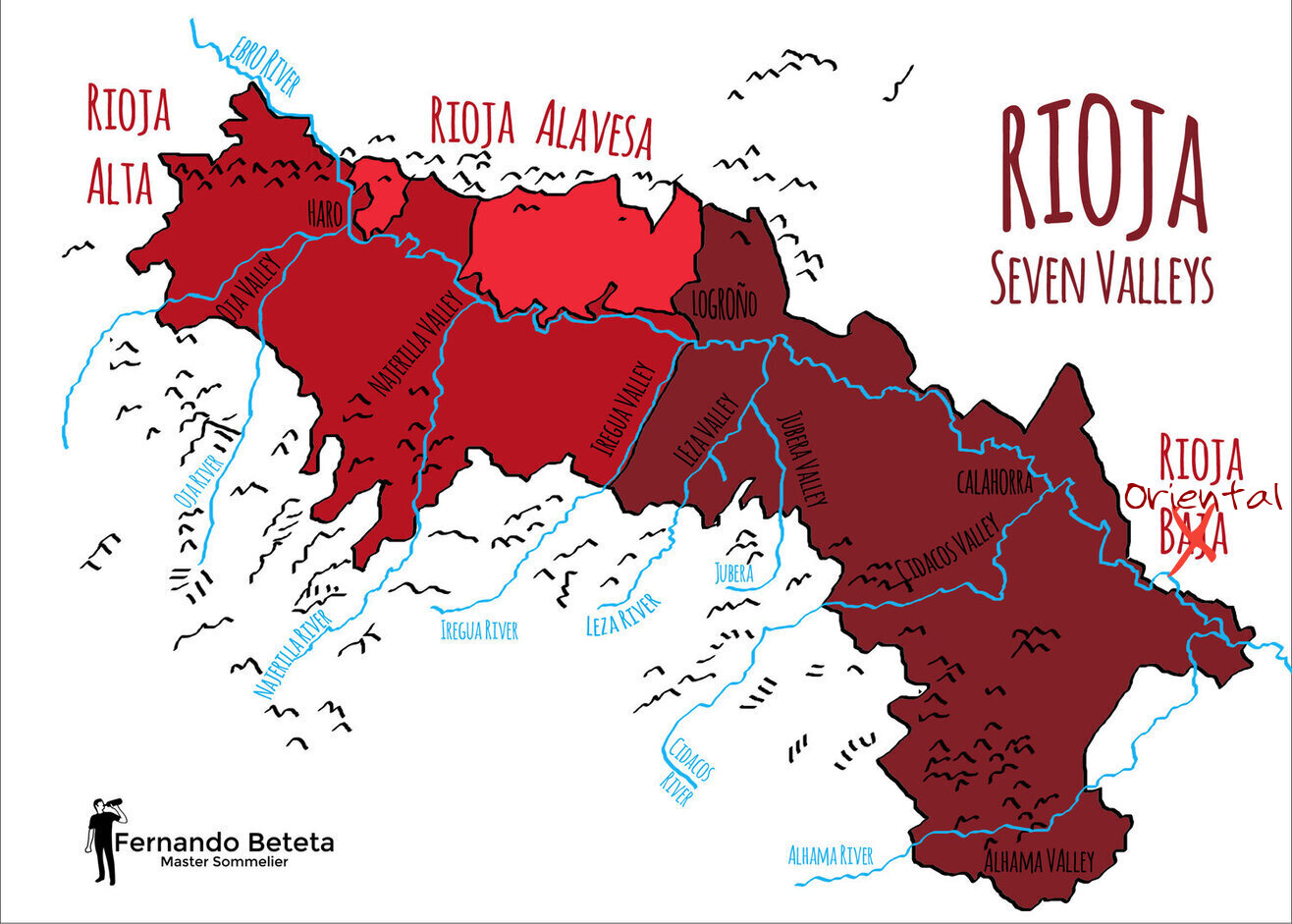
DOCa Rioja is subdivided into three zones; Rioja Alavesa, Rioja Alta and Rioja Oriental (formerly Baja.) Each zone is distinctly different than the others. Rioja Alta is located exclusively within the autonomous region of La Rioja. Rioja Alavesa is entirely located within the autonomous region of Pais Vasco and Rioja Oriental is supra-autonomous being spread out over both La Rioja and Navarra.
The largest volume of vineyards is found within Rioja Alta even though Rioja Oriental is the largest zone in size. Rioja Alavesa has the honor of being both the smallest in magnitude and in vineyard growth. Additionally, the soil types vary depending on the zone. Chalk is the predominant soil type in Rioja Alavesa and both ferrous clay and alluvium soils can be found in the other two zones.
Spain has specific aging regulations, but DOCa Rioja does not follow the traditional aging requirements. General Rioja does not require time in bottle, however, DOCa Rioja does for their Reserva and Gran Reserva classifications. Similar to Rioja Baja, now called Oriental, the term Joven has been replaced by Generico.
There are also different regulations for white wines. Similar to red, there are no requirements for Generico. The main difference occurs in the Crianza category where the wine must be aged for a minimum of 24 months rather than the typical eighteen. All other categories remain the same. There are also Zonal classifications within DOCa Rioja.
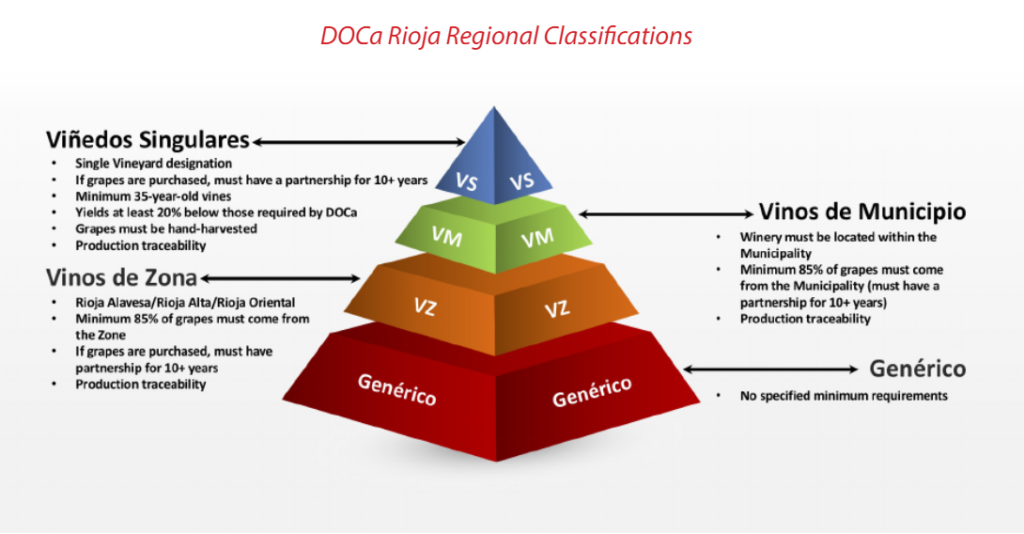
I had the privilege of receiving samples from El Coto. The winery has 1804 acres of vineyards in order to guarantee quality. The vineyards are located across all three subzones and boast ownership of the highest altitude within the DOCa.
Founded in 1970, El Coto produces wines across the spectrum; including white, rosé, Crianza and Reserva. Their goal is to provide consumers with the highest quality of wine at an everyday price point. El Coto is the largest winegrower within the DOCa Rioja. In addition to the typical varieties found in the region, they also produce Verdejo, Chardonnay and Sauvignon Blanc.
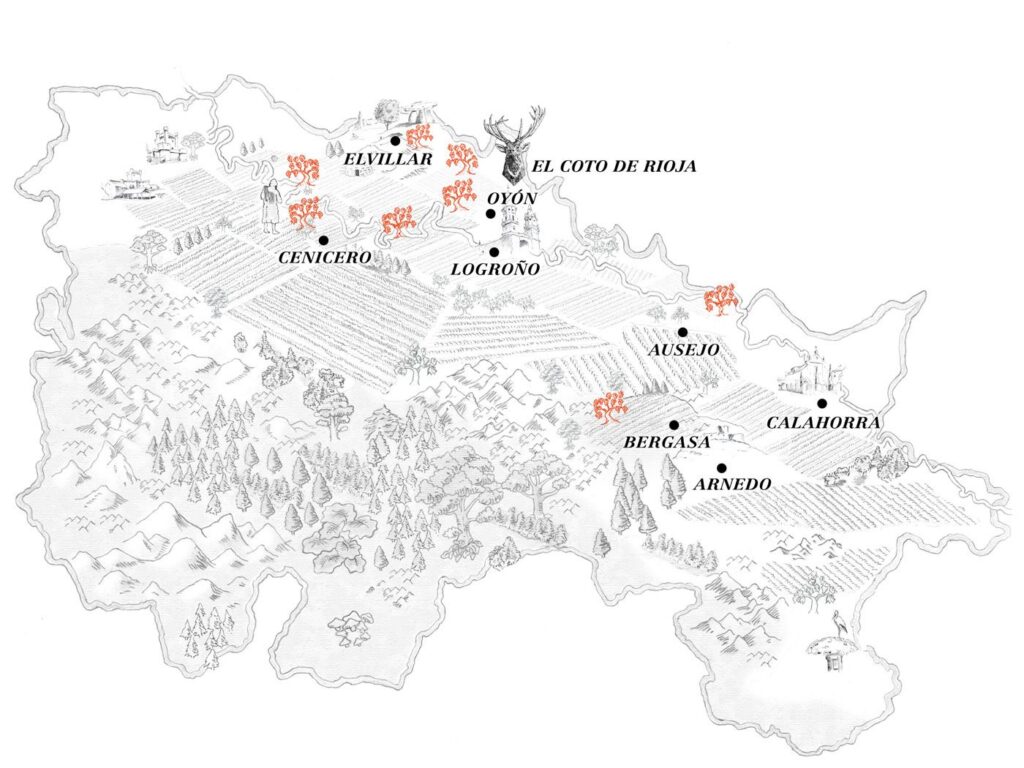
2022 El Coto Blanco (93% Viura, 4% Sauvignon Blanc, 3% Verdejo)
-pronounced aromas of green apple and melon. Crisp acidity with similar flavors with the addition of salinity. Medium body and alcohol. Surprisingly long finish. SRP: $11.99
2021 El Coto Rosado (90% Tempranillo, 10% Garnacha )
~medium aromatics of strawberry and raspberry. Slight sweetness on the palate. Flavors of strawberry and red currant. Medium acidity, light body and alcohol. Medium finish SRP: $11.99
2019 El Coto Crianza (100% Tempranillo)
~ pronounced aromatics of cherry, cranberry and oak. Flavors of lavender, oak, sour cherry and tobacco. Medium body with firm tannins. Medium finish. SRP: $16.99
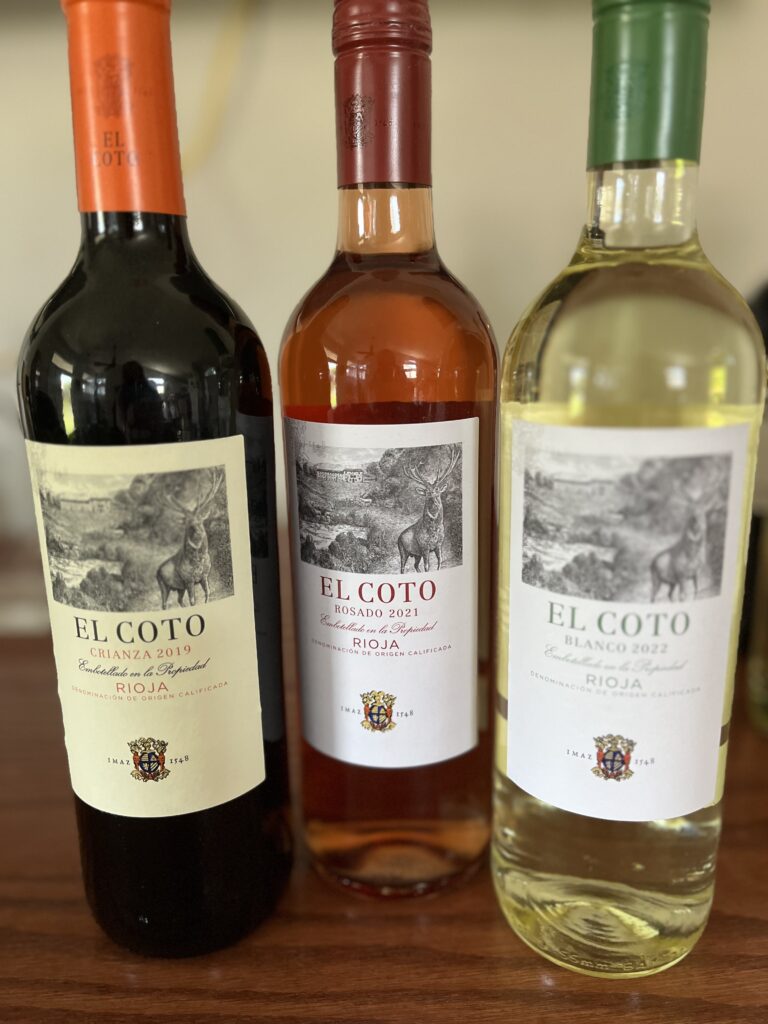
~Slàinte!
I invite you to follow me on Instagram, Twitter, Facebook and Youtube for all things wine. I’ll never tell you what to drink, but I’ll always share what’s in my glass.
Please support our sponsor:
We’ve stacked the odds so that you can get our award winning wines without breaking the bank. Click the image to find out all of the benefits of joining the CHALK CLUB including discounted shipping and up to 25% off all purchases. .


